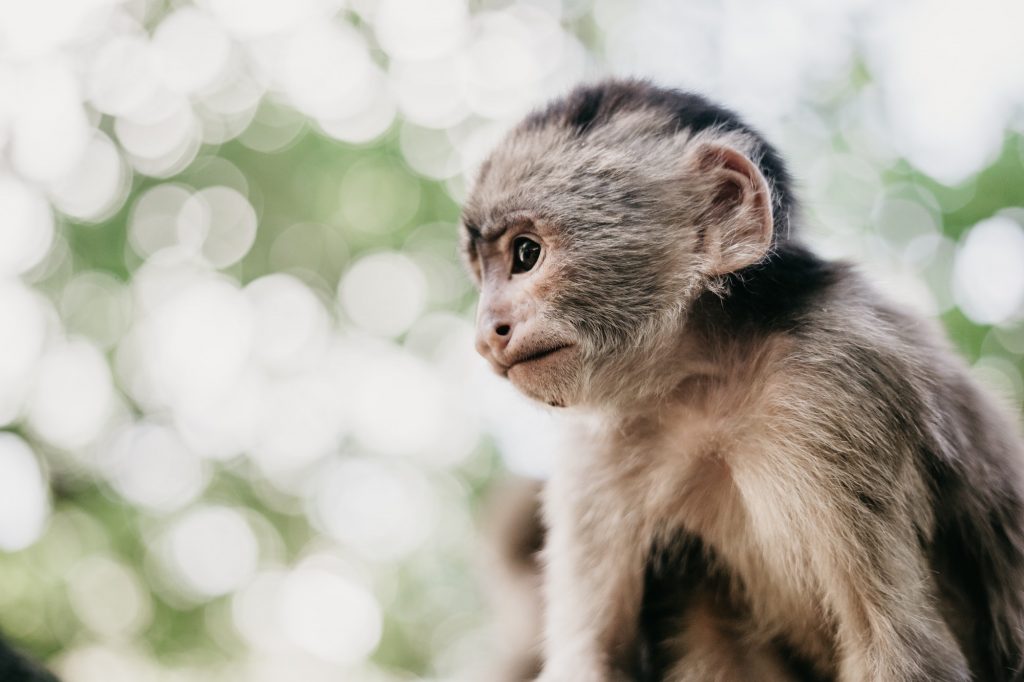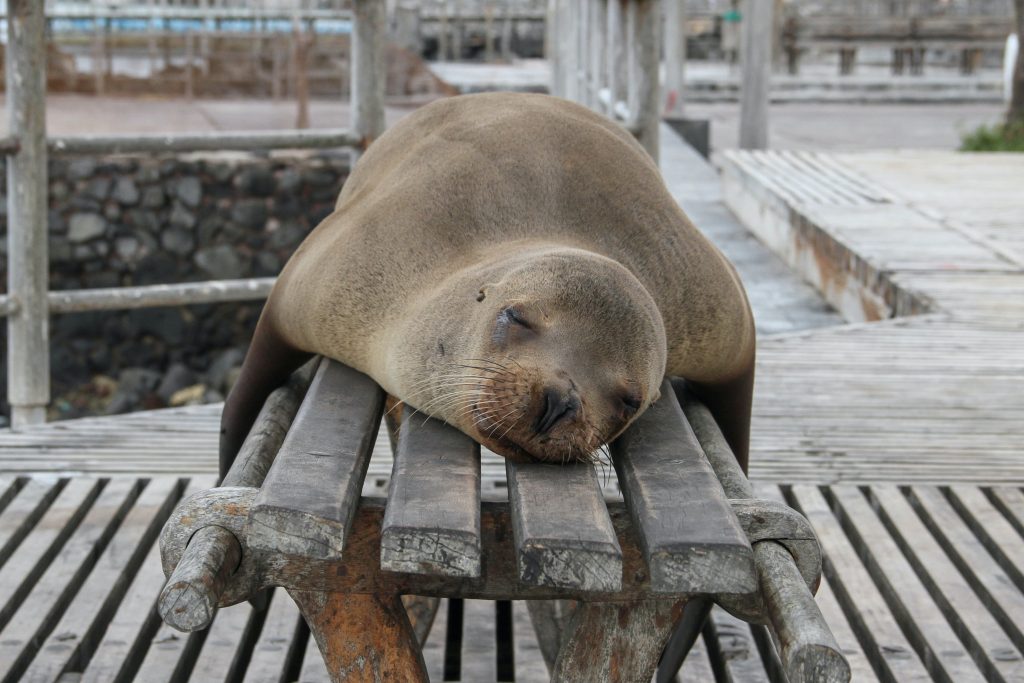A court in Ecuador recently ruled that wild animals are included in the country’s Constitutional Rights of Nature.

By Zane McNeill
On September 11th, 2019, the home of Ana Burbano Proaño, a 57-year old librarian in Ecuador, was raided by Ecuadorian authorities who had concluded that Ms. Proaño was in possession of an endangered woolly monkey. This monkey, whom Ms. Proaño had named Estrellita, had lived with Mr. Proaño for 18 years as a pet, which is illegal under Ecuador’s environmental regulations regarding wildlife.
Estrellita was seized by officials and separated from Ms. Proaño before being transferred to the San Martin Eco Zoo. On December 6th, Ms. Proaño filed a petition for habeas corpus, a writ in which persons can challenge an unlawful detention. In the petition against the Ministry of the Environment, Proaño argued that Estrellita was being wrongfully held captive.
Estrellita died at the San Martin Eco Zoo on January 28th, 2020, but the habeas corpus case Ms. Proaño filed on Estrellita’s behalf was accepted by Ecuador’s constitutional court. The justices magistrates used the case to address the larger question of whether nonhuman animals possessed certain legal rights under Ecuador’s constitutional rights of nature.
What are the Rights of Nature?
In international jurisprudence, Rights of nature is a concept in which ecosystems are entitled to legal personhood status. Under this legal framework, the environment has the legal right to exist, naturally evolve without human-caused disruption, and defend its rights in Court. Examples of ecosystems that have been granted legal rights include the Marañón River in Peru, the Te Awa Tupua waterway in New Zealand, the Wekiva River in Orange County, Florida, and the Magpie River in Quebec, Canada,.
Numerous lawsuits, such as the Colorado River Ecosystem v. State of Colorado in the United States, Future Generations v. Ministry of the Environment in Colombia, Asociación Civil por la Justicia Ambiental v. Province of Entre Ríos, et al. in Argentina, and G. Khan Cement Company v. Government of Pakistan have utilized these rights of nature to allege that human-caused climate change is a direct threat to these legal rights. In the Future Generations case in Colombia, the Court found that the Colombian Amazon was a “subject of rights” entitling it to protection from deforestation.
iNonhuman Animal Legal Personhood and the Writ of Habeas Corpus
Similar to the rights of nature cases, some nonhuman animals have been found to be entitled to legal rights in India and Pakistan. In 2014, the Supreme Court of India ruled that Article 21 of the Indian Constitution, its right to life provision, extended to nonhuman animals. This laid the framework for the High Court of Punjab and Haryana’s 2019 decision that recognized all animals as legal entities.
In 2020, the Islamabad High Court of Pakistan, which involved an elephant at the Marghazar Zoo, similarly recognized that animals had legal rights under the constitution. Chief Justice of the Islamabad High Court, Justice Athar Minallah, ruled that “like humans, animals also have natural rights which ought to be recognized. It is a right of each animal… to live in an environment that meets the latter’s behavioral, social and physiological needs.”

Does Habeas Corpus apply to animals in the United States?
In addition, in 2022, New York State’s highest court will hear a state habeas corpus petition brought on behalf of Happy, an elephant currently at the Bronx Zoo. In their petition, the Nonhuman Rights Project contends that the New York common law of habeas corpus is inclusive of some nonhuman animals, like Happy, who have the “right to bodily liberty and immediate release so as to prevent future unlawful deprivations of her liberty.”
The nonprofit, the Nonhuman Rights Project (NhRP), is the leading voice for nonhuman legal personhood and habeas corpus rights for animals.
Celebrated United States legal scholars such as constitutional law expert Laurence Tribe and environmental and animal law professors Randall Abate, Pamela Frasch, Matthew Liebman, Justin Marceau, and Rajesh Reddy have filed a motions for leave to file an amicus brief in support of Happy’s petition for a writ of habeas corpus. In it, experts argue that some nonhuman animals, like Happy, are entitled to legal rights and that earlier decisions that linked legal personhood with legal duties—which would also exclude children and some people with disabilities from legal personhood—should be overturned. These experts contend that these earlier cases, People ex rel. Nonhuman Rights Project v. Lavery and Matter of Nonhuman Rights Project v. Lavery, were predicated on biological prejudice.
If Happy is granted a writ of habeas corpus, it will be the first time a U.S. court recognizes a nonhuman animal’s right to bodily liberty and would require that Happy be released to a sanctuary. Until now, the right to liberty in American courts has been exclusively a human right.
In addition to litigating on behalf of Happy, NhRP has also filed amicus briefs in international cases relating to nonhuman legal personhood and habeas corpus rights, including the Ecuador matter.
In collaboration with the Brooks McCormick Jr. Animal Law and Policy program at Harvard Law school, NhRP filed a brief summarizing why animals can be the subject of rights, why the writ of habeas corpus can be appropriate for nonhuman animals, and why nonhuman animals are subjects of rights protected by the rights of nature.
NhRP and the Brooks Animal Law and Policy program invited Spanish speaking attorneys to translate legal sources, draft sections relating to Latin American law, and explain why the rights of animals, under the rights of nature, are components of the indigenous principle of good living, or sumac kawsay.
Ecuador’s Constitutional Court’s Decision on Wild Animal Personhood
Kevin Schneider, Executive Director and an attorney with the NhRP, was happily surprised by the Court’s judgment because of the known conservatism of the Judge. However, he was confident that under the Constitutional Court of Ecuador, animals are in fact a part of nature and, therefore, “as one of nature’s elements…humans must respect their life cycles, structures, functions, and evolutionary processes,” as explained in the amicus brief.
“If you’re talking about rights, you’re talking about personhood, explains Schneider. “If you have a given right, you’re a person with respect to that right.”
In its Final Judgment, the Court argued that the “life and integrity of Estrellita, the little monkey, was seriously compromised…[and that] wild animals, as subjects of rights, are protected in their right to life…it is evident that it [‘s removal] could be considered a violation of its rights to integrity and life…and, therefore, a violation of the rights of nature in the specific case.”
This argument that wild animals have a right to liberty and physical integrity under the right of nature may have implications for future cases, explains Schneider. These legal rights, which belong not only to species as part of biospheres but individual animals as well, derive from the animals’ own innate value and are not dependent on the animal’s value to humans or ecosystems.
For the moment, however, “a right to liberty and a right to not have your body messed with, your physical integrity, those seem, pretty much to start with, the most important things nonhuman animals need.”
Implications of This Ecuadorian decision
Wild animals, as a component of Nature, simply have the right to exist. The Court says that this right to exist means that wild animals have the right to not “be extinct for non-natural or anthropic reasons,” which has a very tangible political impact. The Judgment is clear that activities carried out by human beings that “may lead to the extinction of species, [or] the destruction of the ecosystems they inhabit” would infringe upon wild animals’ rights to exist under the rights of Nature. This could lead to future cases brought on the behalf of wild animals who are facing ecosystem loss because of extractive industries.
In addition, the Court is adamant that the State is therefore not only obligated to “promote, protect, and ensure the development of the free behavior of wild animals” but that it also prohibits the State of any individual from interfering with wild animal’s behavior. This includes capturing, collecting, extracting, and trafficking wild animals.
While the Court found that “animal rights constitute a specific dimension with its own particularities of the rights of nature” and that “Ecuador animals enjoy special constitutional and legal protection,” the Court was clear that these rights only extend to wild animals. The Judgment explains that the right to hunt, fish, and feed on domesticated animals is “legitimate, and reflect[s] historical and maintained forms of interaction of the human species.”
However, future interpretations of this decision may continue to broaden not only who and what is protected by Ecuador’s rights of nature, but also how far those protections go.
As Schneider explains, “Imagine that you’re this orca and you have the right to physical integrity, and you’re being starved to death by some salmon farm. Why shouldn’t they have standing to bring a lawsuit on their behalf? Whereas now, you might have a legitimate way to bring a lawsuit [on their behalf].”
In other words, while the Court has clearly stated that domesticated animals are not covered by the rights of nature, this decision may still effect domesticated and farmed animals, such as salmon. If corporate farming practices are negatively effecting the rights of Ecuadorian wild animals, they are at the risk of facing litigation brought on the behalf of the wild animals that they have harmed.




